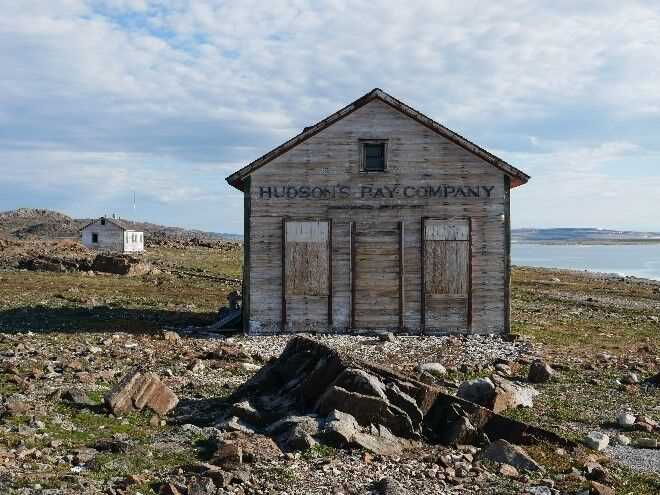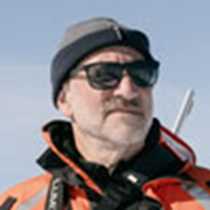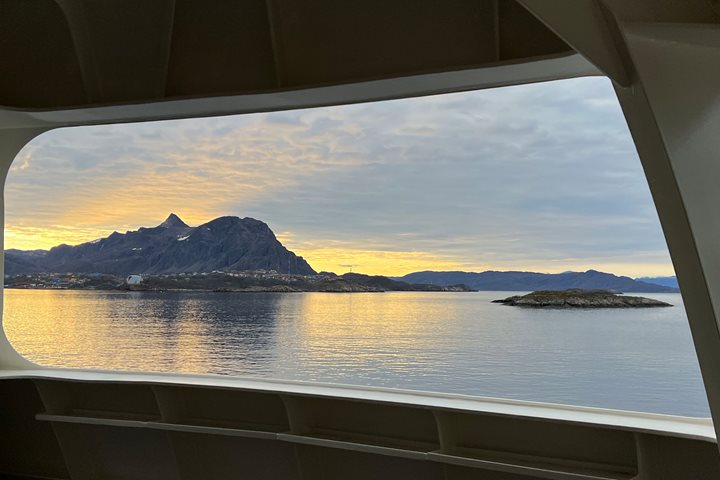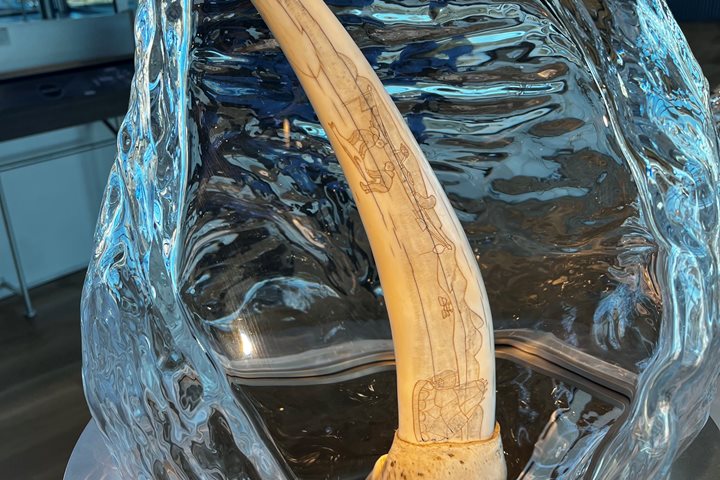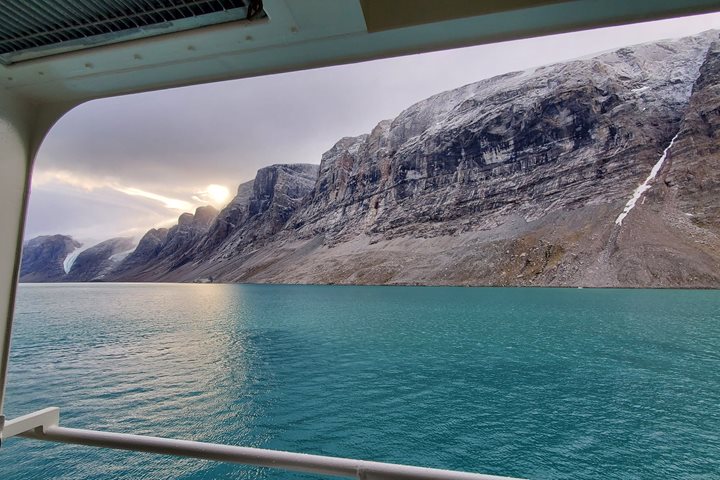Our overnight crossing of Prince Regent Inlet was smoother than anticipated, and we arrived at Fort Ross around 6:00 a.m. We awoke to perfect calm. Handfuls of clouds were beautifully reflected in the mirror-like ocean. Temperatures were in the 50s. After breakfast, some of us went kayaking among the pack ice while others went ashore to view the abandoned Hudson’s Bay Post and take a short hike. Annie Petaulassie, one of our Inuit Cultural Ambassadors, shared an intimate view of how her family was affected by the Hudson’s Bay Company’s practice of forcibly relocating Inuit to trap foxes.
The Hudson’s Bay Company Post at Fort Ross was the last one the company established. Built in 1937 at the eastern end of Bellot Strait, it was abandoned a few years later as ice conditions made resupply both uncertain and uneconomical. It was briefly reactivated in 1944 but closed shortly thereafter. The Inuit who were separated from their families in Cape Dorset were again relocated, this time to Spence Bay (Taloyoak). Today, Inuit from communities to the south and west use the post’s store for shelter when hunting or traveling through the area.
After lunch, we continued our journey, entering Bellot Strait and heading west. The strait is a narrow channel separating Boothia Peninsula, the northernmost part of continental North America, from Somerset Island. Almost immediately, we began to see narwhals. By the time we reached the western end of Bellot Strait, we had seen dozens and dozens of them, including a few with tusks.
Once we exited Bellot Strait, we entered the ice. National Geographic Resolution pushed ahead in search of a good lead to ease our passage to the west and south. The clear skies continued, and the ice was dotted with seals sunning themselves. Ringed seals are camouflaged well for the water with a mosaic of light and dark fur, but they are easy to spot on the ice. Where seals bask, bears are sure to follow, and we quickly lost track of the number of bears we saw. By 9:00 p.m., we found a good lead and began making excellent progress through McClintock Channel.
Traveling through the ice was slow, but guests and staff enjoyed the majestic beauty of the frozen ocean in the golden hours while watching out for polar bears and seals.

